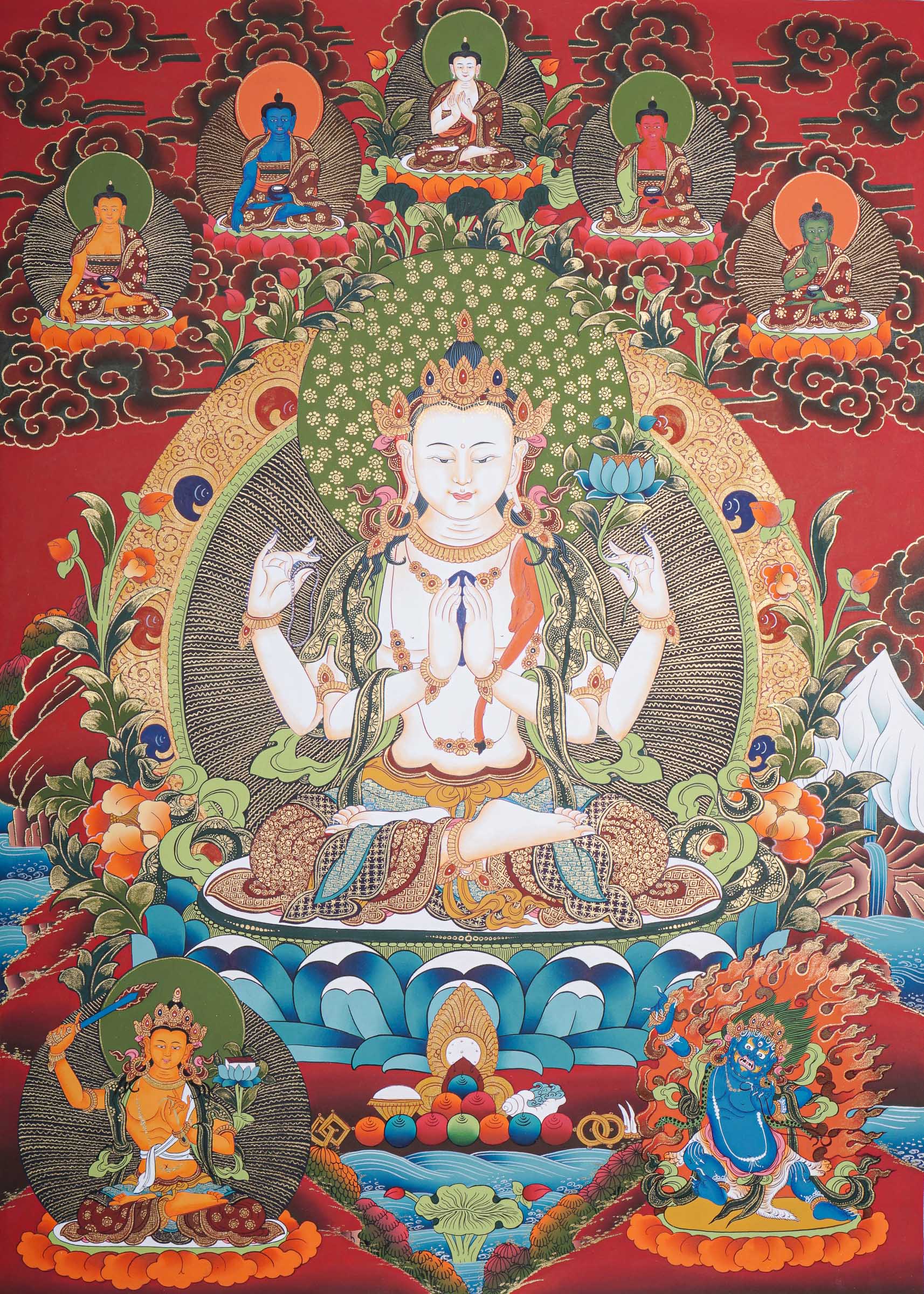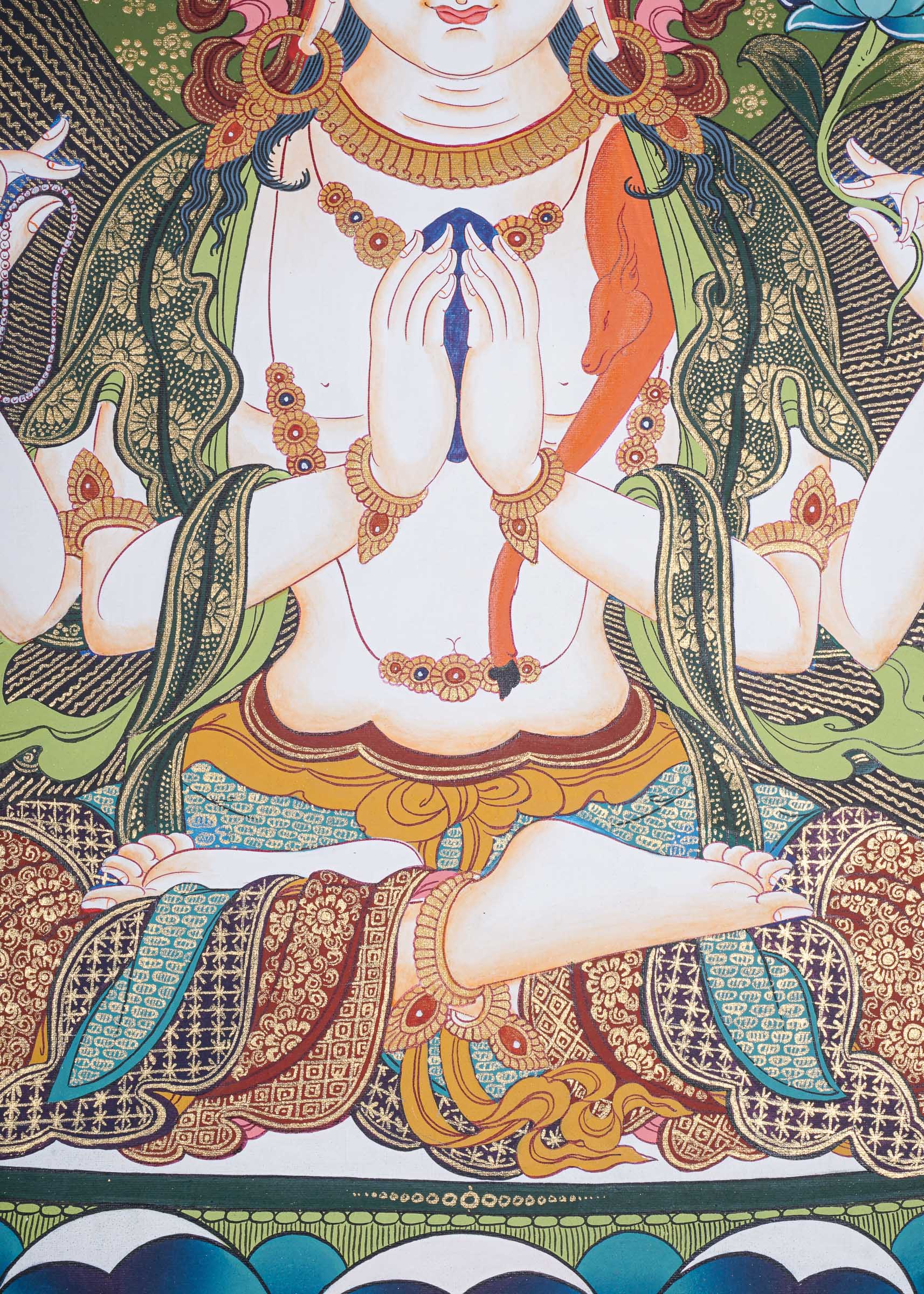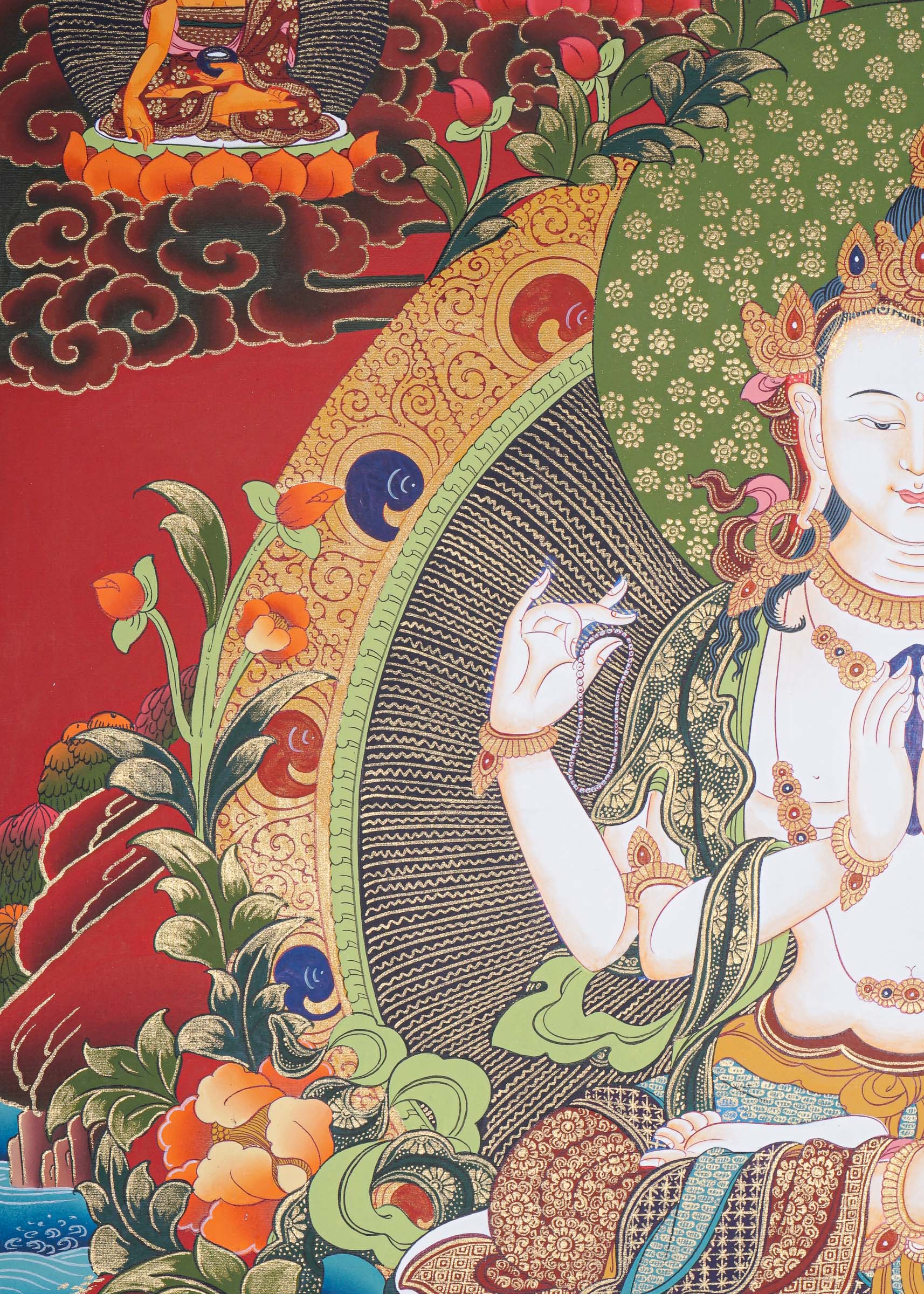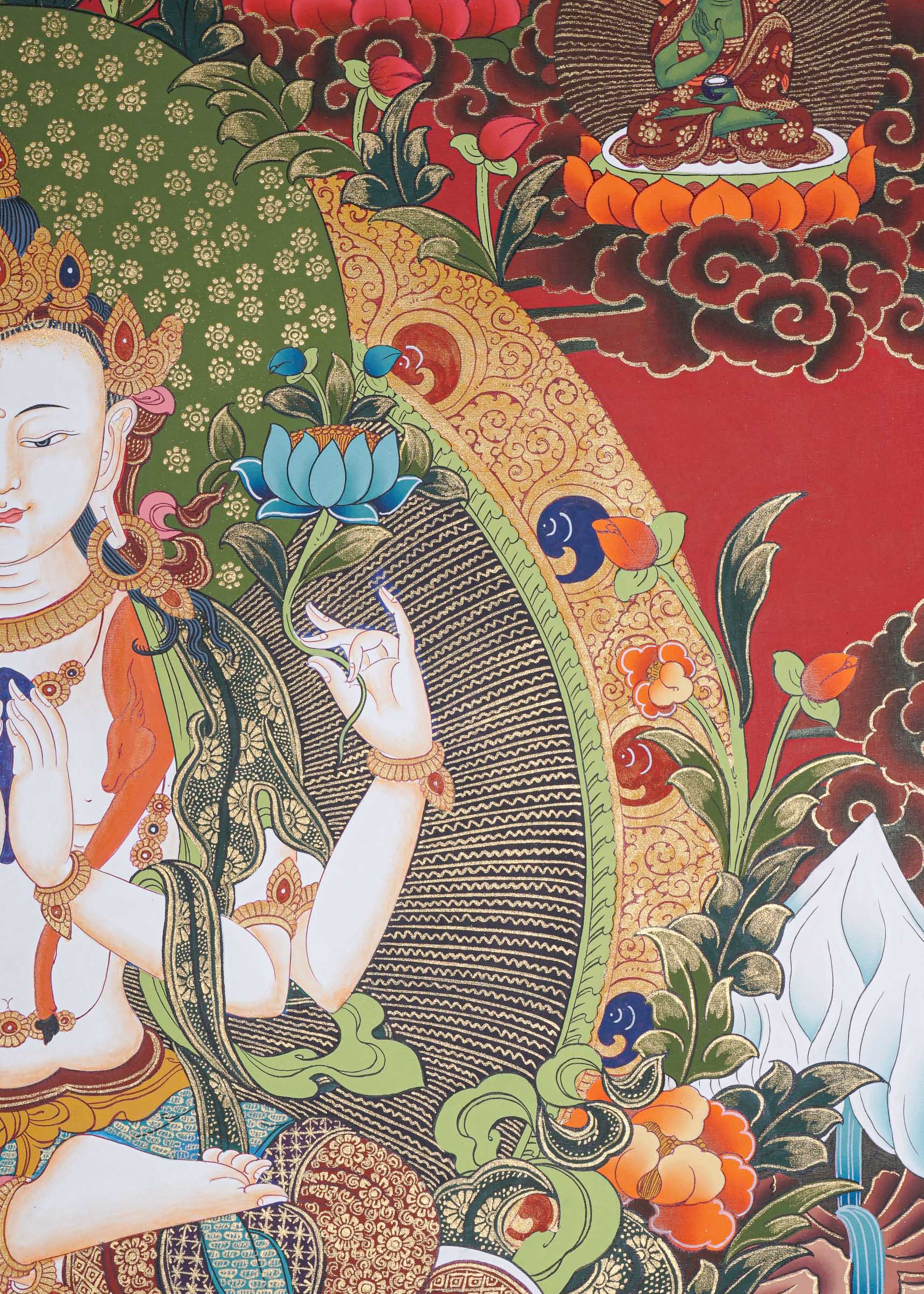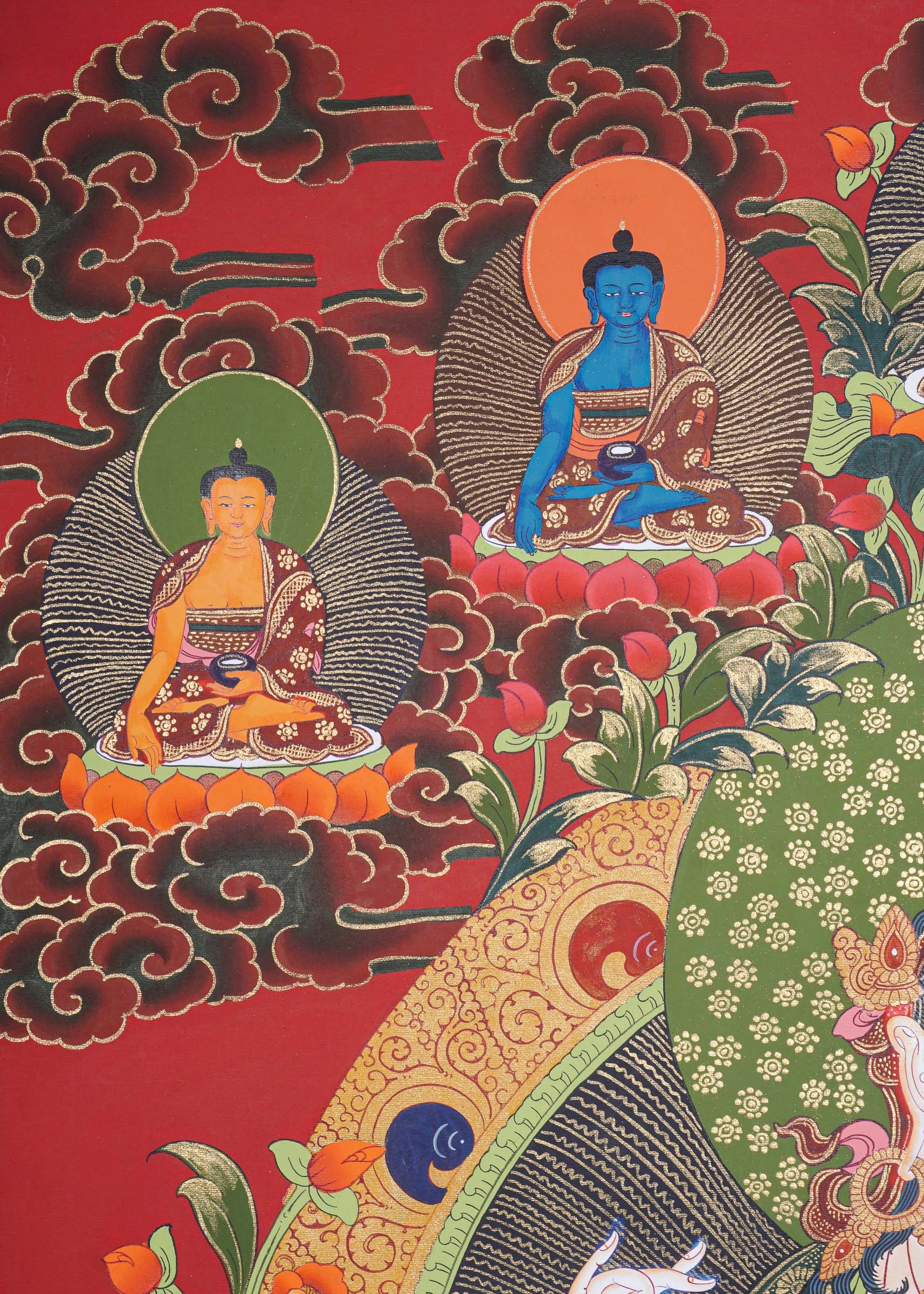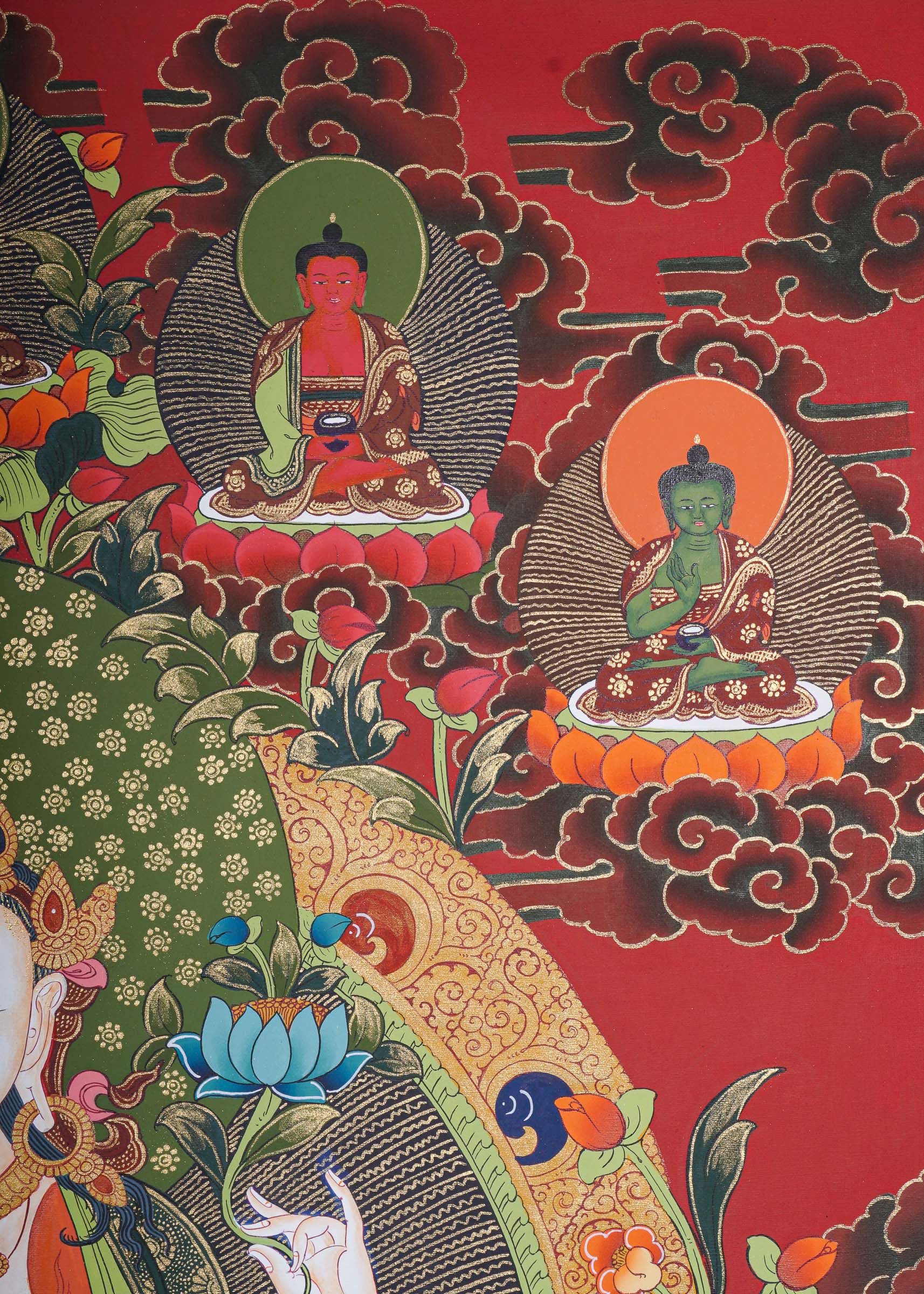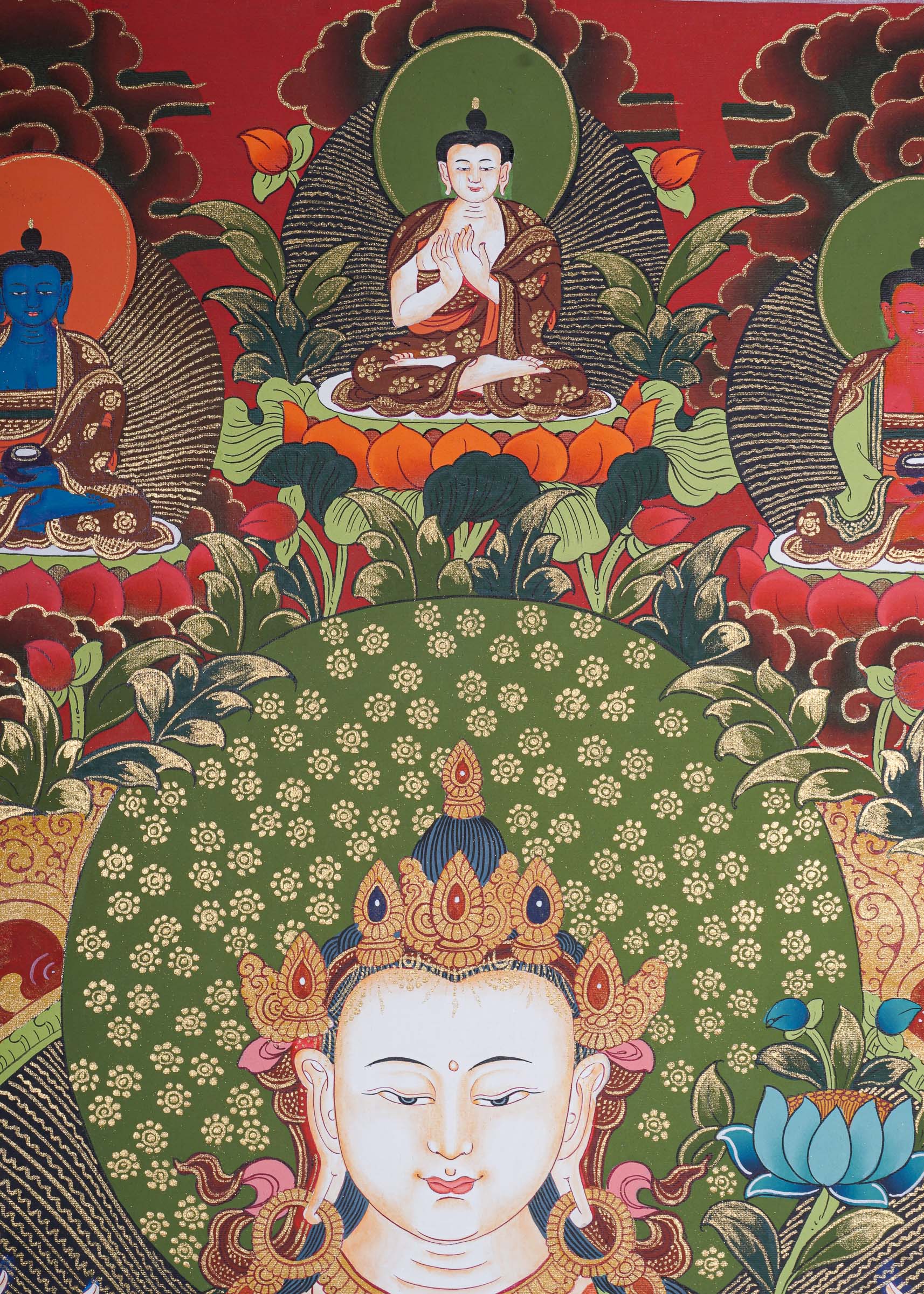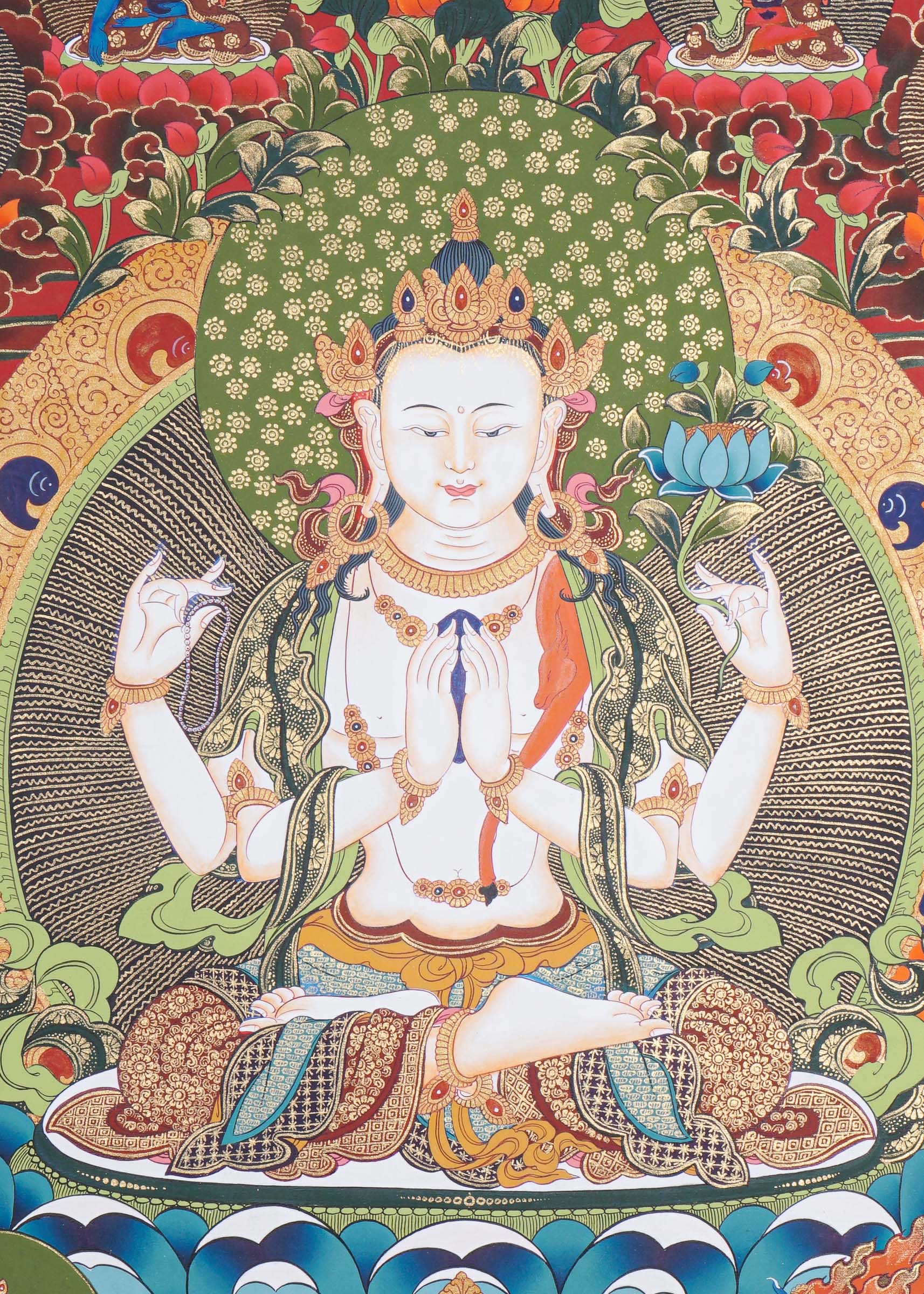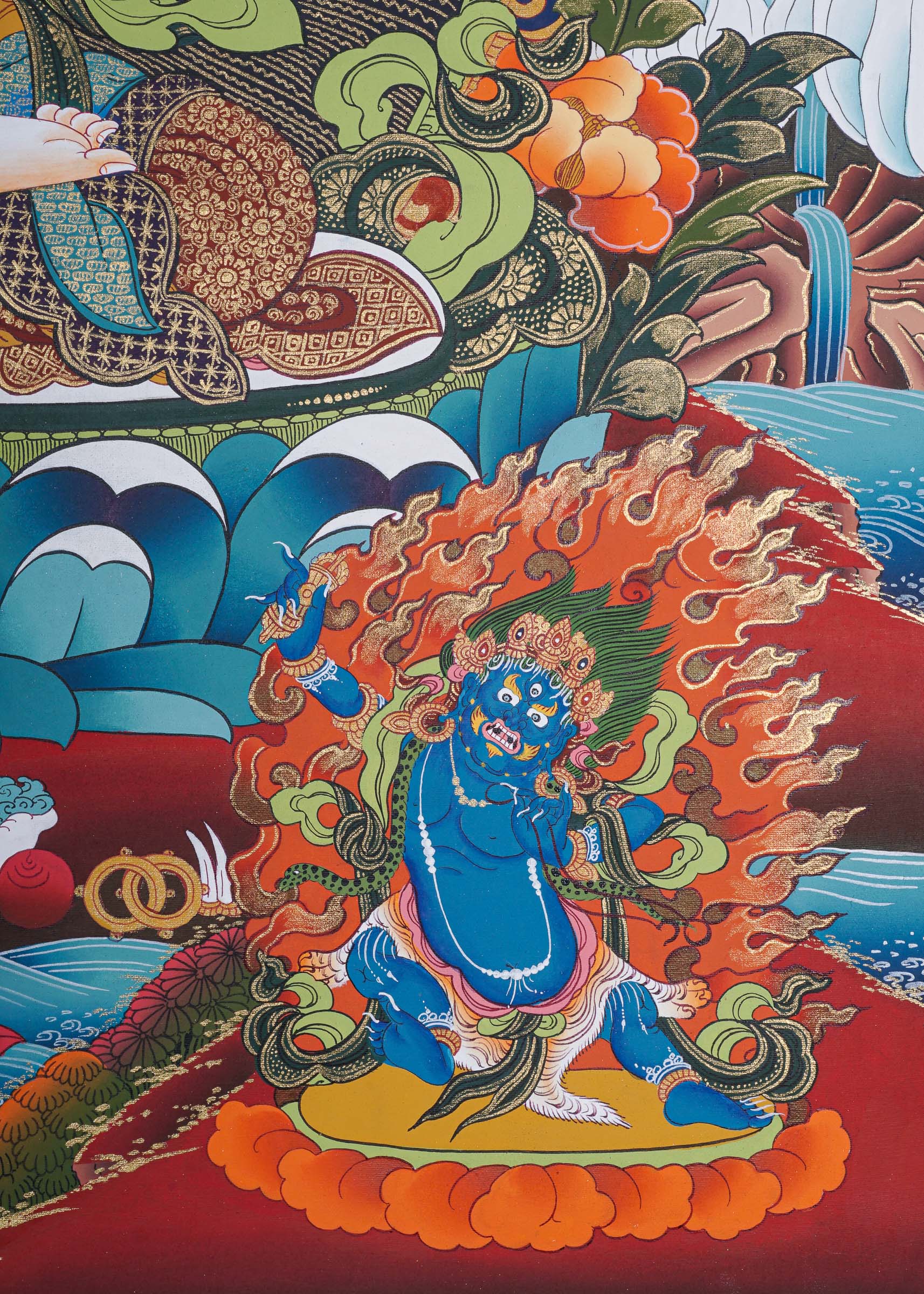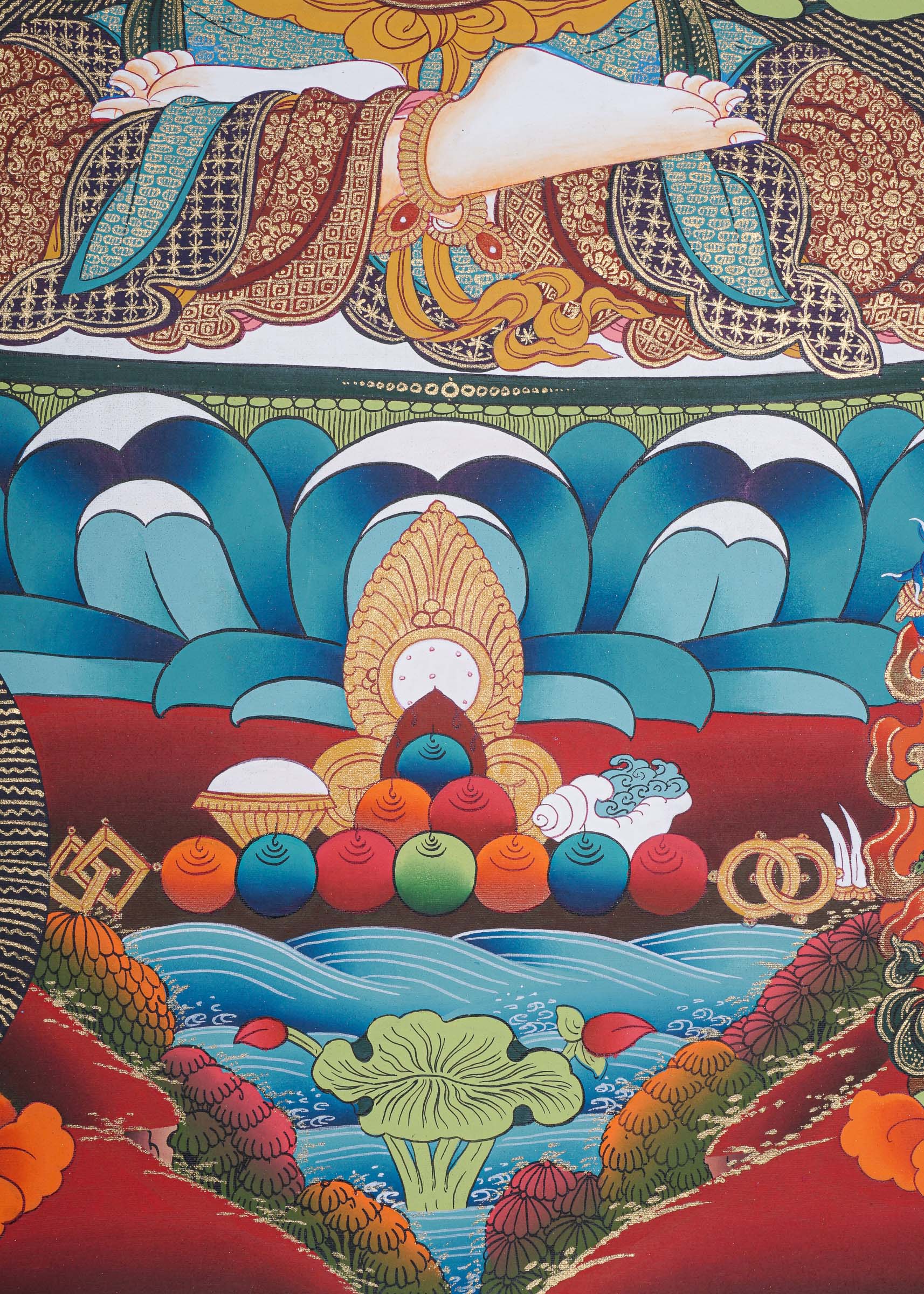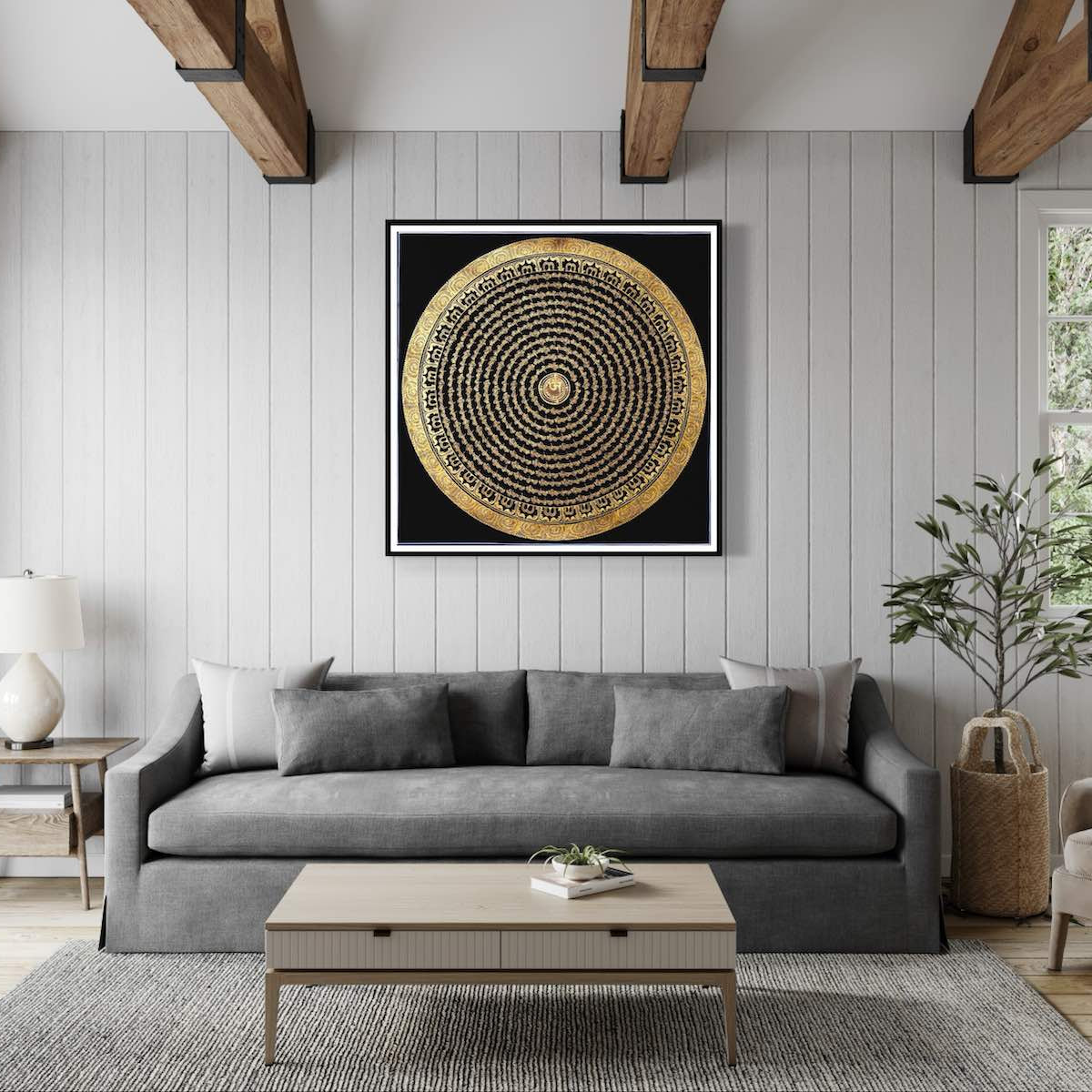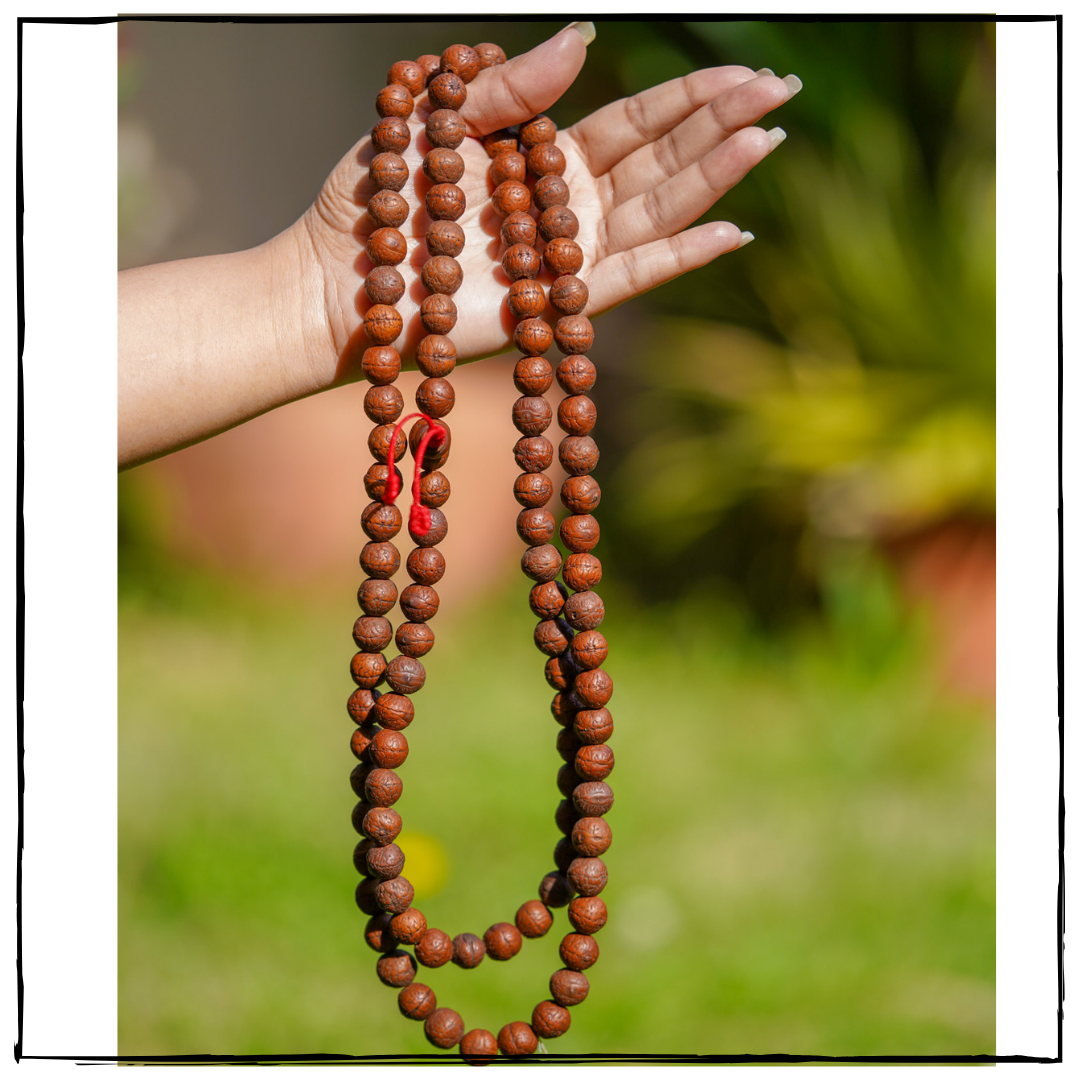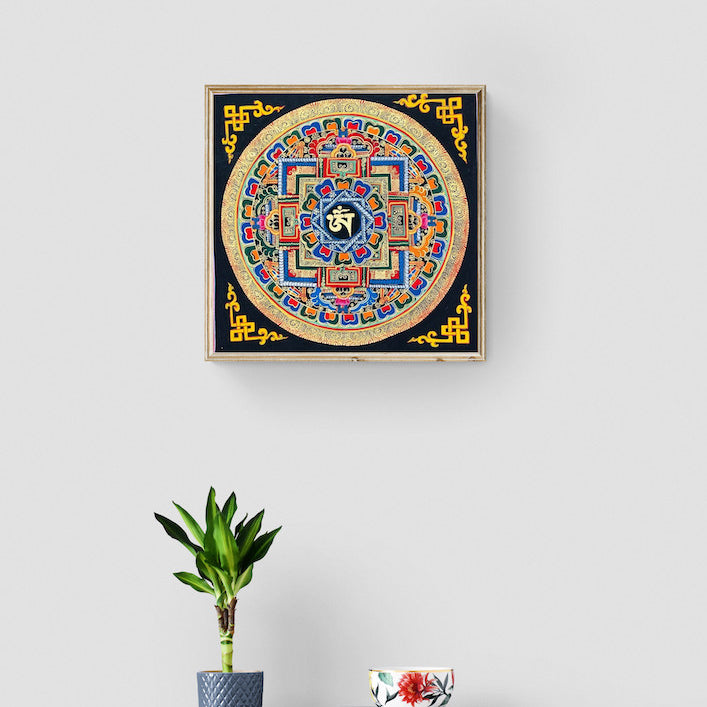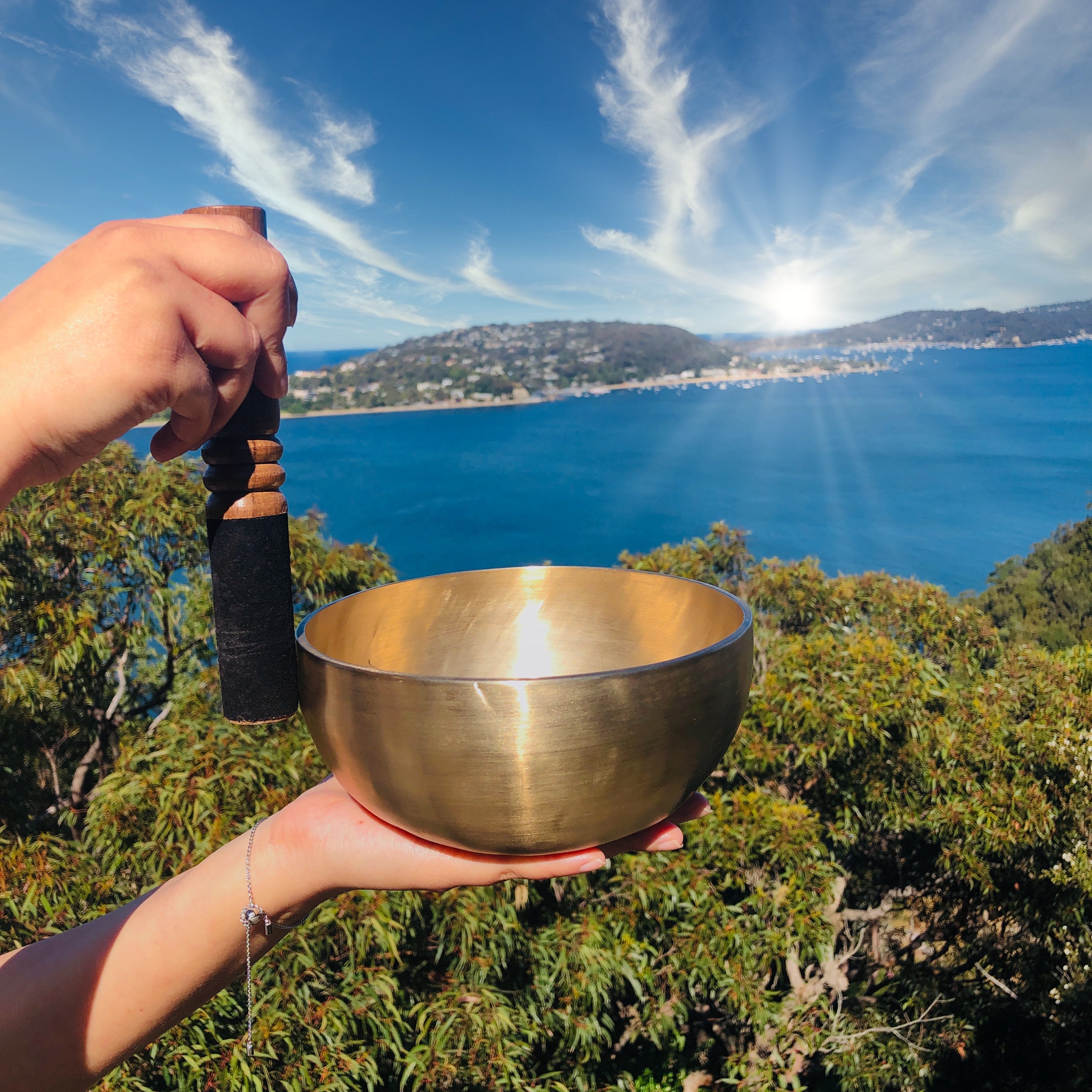Chengresi Thangka Painting
Couldn't load pickup availability
Description
The Chenrezig (Avalokiteshvara) Thangka is a hand painted revered object in Tibetan Buddhism, serving as a crucial guide for cultivating compassion and wisdom through meditation and spiritual practice. This significant painting portrays Chenrezig, the Bodhisattva of Compassion, who holds a revered position as the embodiment of compassion for all Buddhas, known as Avalokiteshvara in Sanskrit.
Key Features:
- Central Figure: The depiction of Chenrezig in this Thangka painting is of his most common form, with four arms. His top two hands are shown in a prayer gesture, while the lower two hold a crystal rosary and lotus flower, symbolizing his qualities of compassion and purity.
- Aureole or Halo: Chenrezig's enlightened nature and spiritual purity are depicted through a luminous aureole or halo that envelops their head and body. This symbol serves to showcase their divine and holy essence.
- Lotus Throne: Chenrezig is typically depicted sitting on a lotus throne, symbolizing purity and spiritual enlightenment, free from the impurities of the world.
- Thangka Composition: The thangka's composition features intricate patterns and additional figures, including deities, Bodhisattvas, and protective symbols, all arranged in harmony around Chenrezig.
Product Specification:
- Hand Painted
- Size: 75 x 55 cm
- Base: Cotton Canvas
- Origination: Nepal

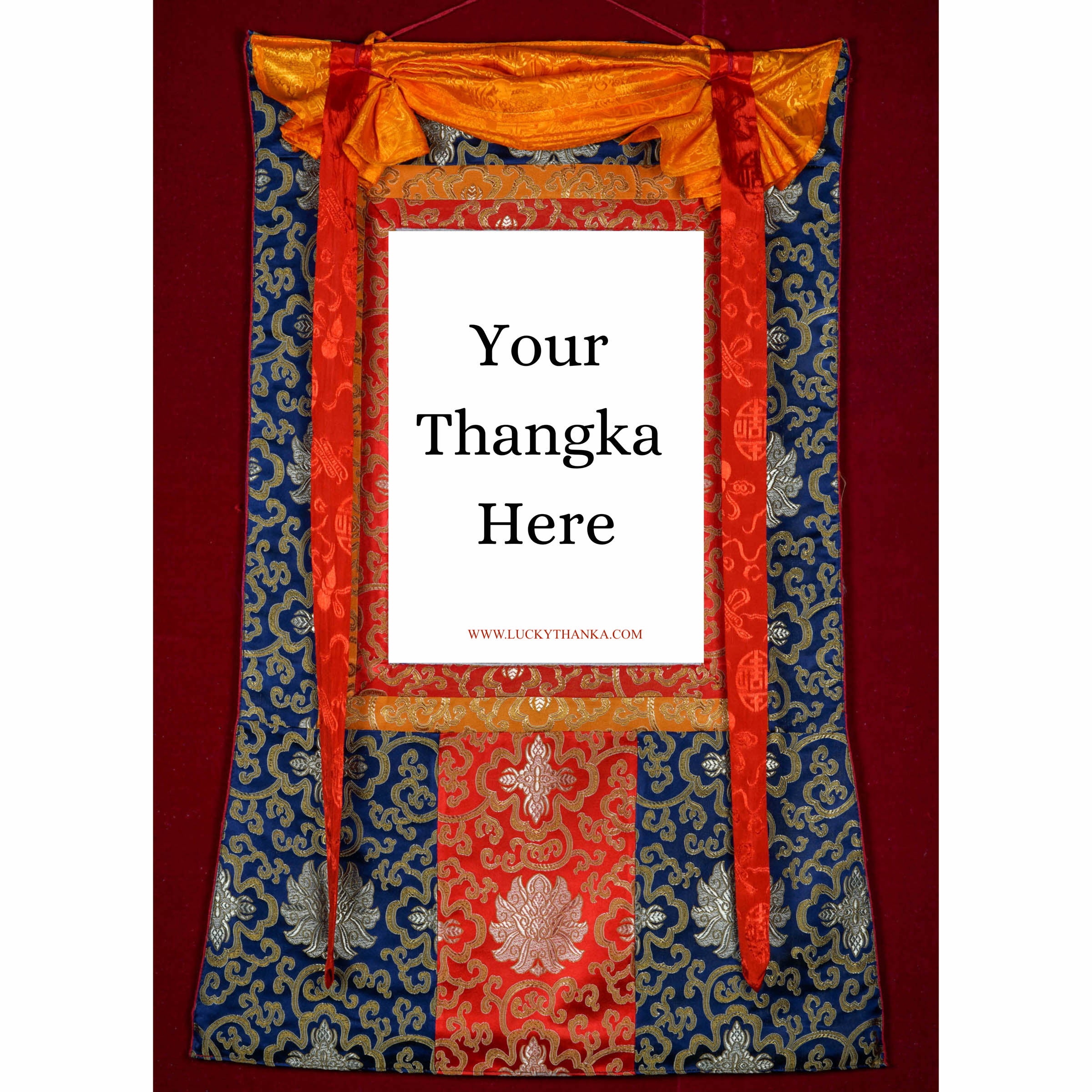
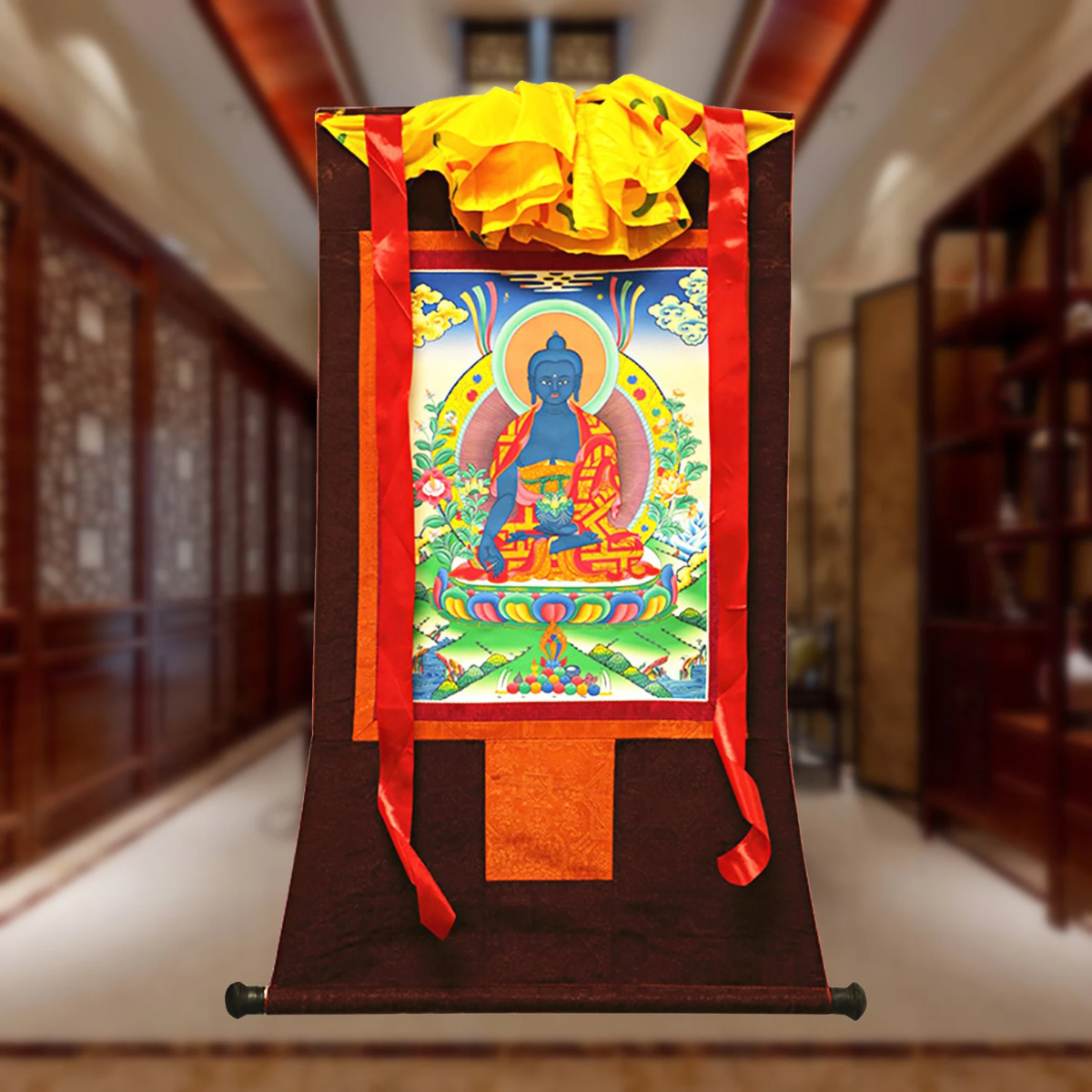
Hand Embroidery Brocade
Want to add a Brocade to your beautiful Thangka Painting? Traditional Style Brocade has been one of the most popular form of mounting as it has a greater religious merit.
Note: Make sure you have added the Thangka to your cart first.
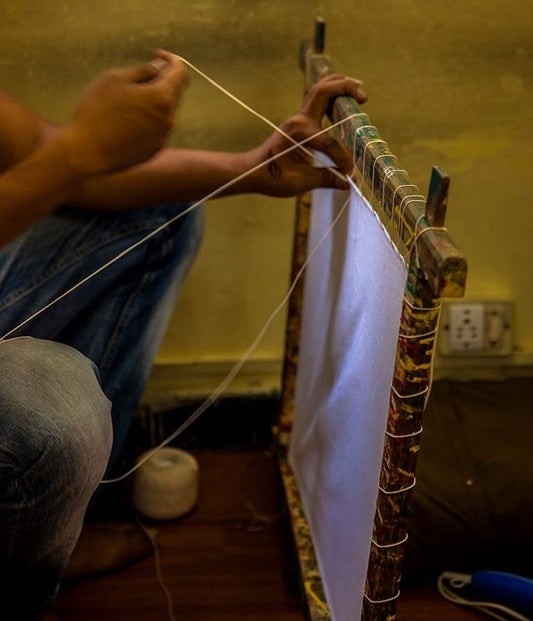
100% Cotton Canvas
Preparing the Cotton canvas before starting to paint a Thangka. This process includes washing, drying, stretching, sizing and everything needed to make a perfect base for the thangka to last for centuries.
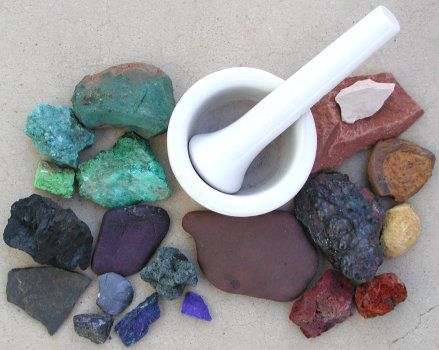
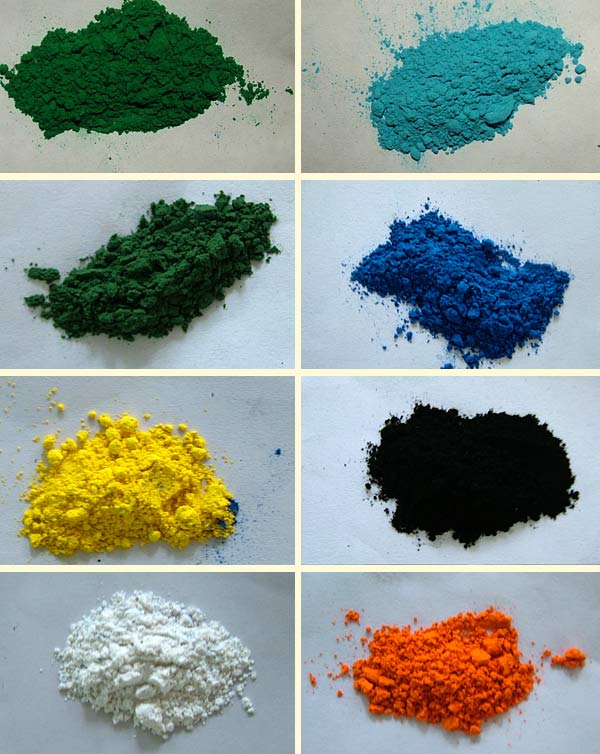
Natural Minerals
Thangka Paintings are painted using the natural minerals. These are firstly grind into the powder form and then used in the thangka as a paint.



